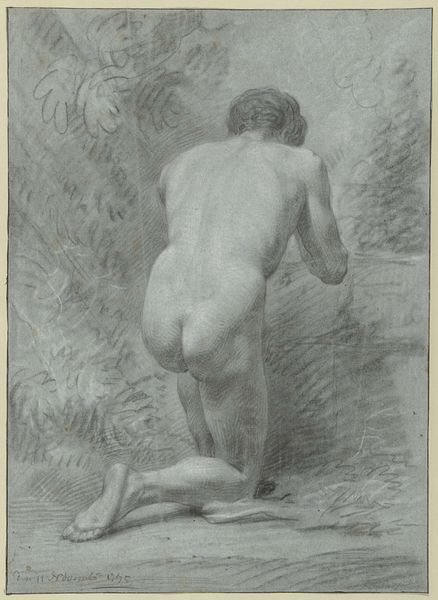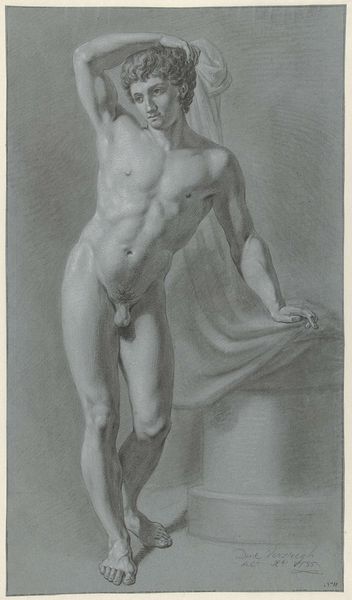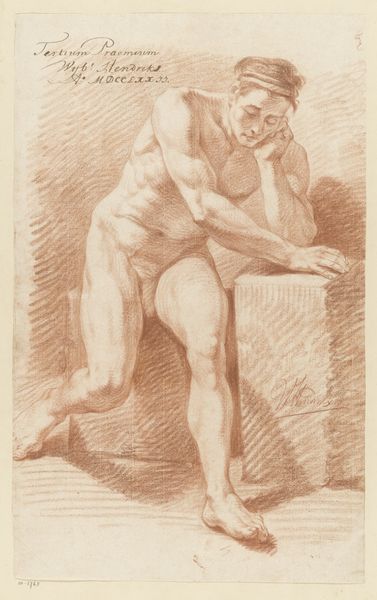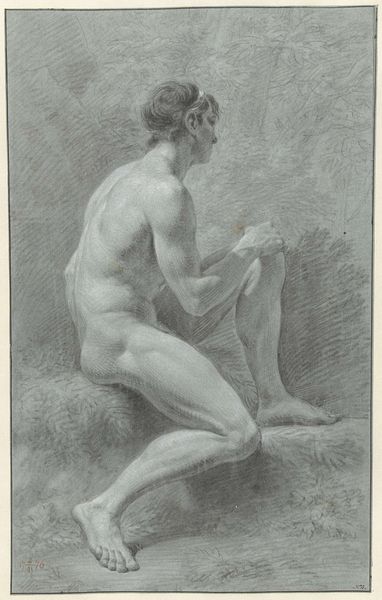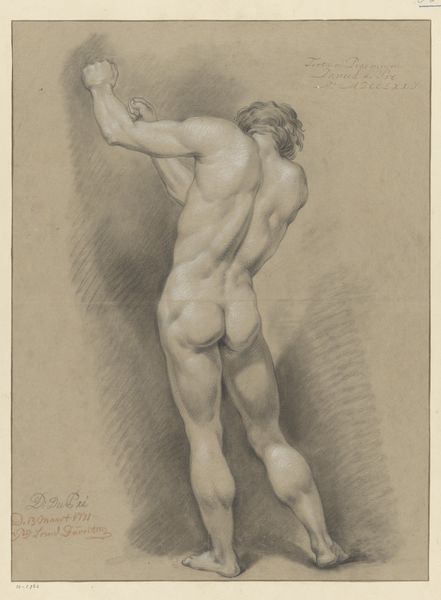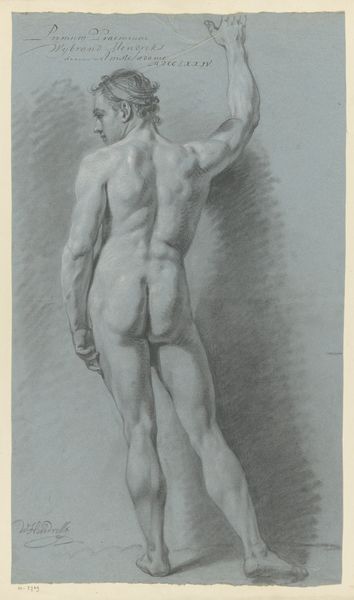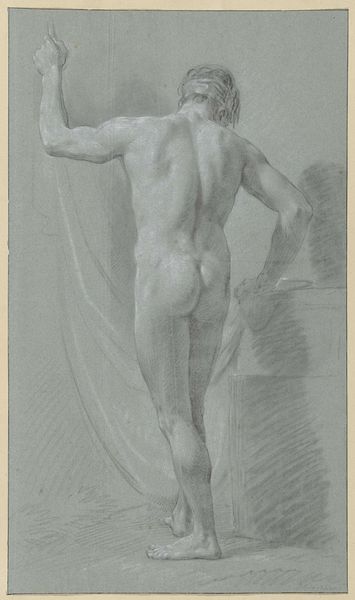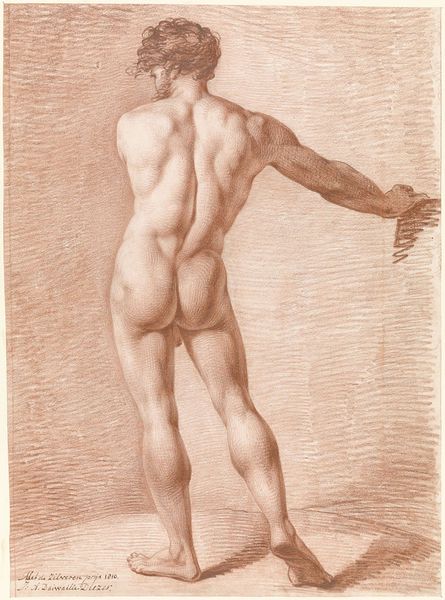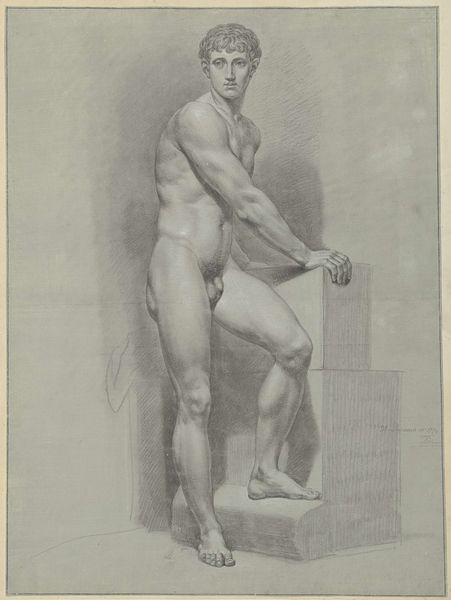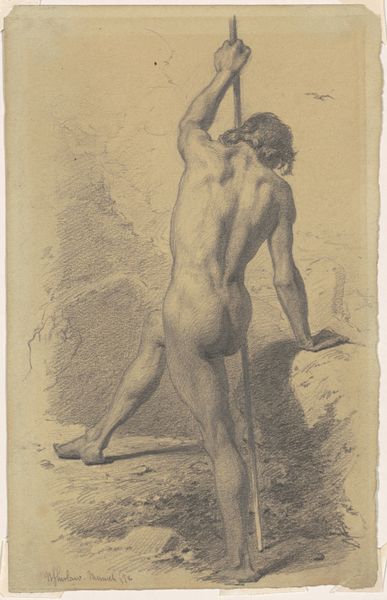
Staand mannelijk naakt, de linkerknie op een rots, de rechterarm geheven 1765 - 1781
0:00
0:00
drawing, pencil, charcoal
#
portrait
#
pencil drawn
#
drawing
#
pencil sketch
#
charcoal drawing
#
figuration
#
pencil drawing
#
pencil
#
portrait drawing
#
charcoal
#
academic-art
#
nude
Dimensions: height 500 mm, width 315 mm
Copyright: Rijks Museum: Open Domain
Editor: This drawing, “Standing Male Nude, Left Knee on a Rock, Right Arm Raised,” by Jean Grandjean, dates to between 1765 and 1781. It’s rendered in pencil and charcoal, and the grey tones give it a ghostly, almost ethereal quality. How do you interpret the symbolism behind the raised arm and the pose? Curator: That raised arm is fascinating, isn't it? It's an invocation. But what is he invoking? Notice the academic style. Think back to the classical era and the renaissance masters. How do you read its cultural memory? What emotions arise? Editor: Well, I think there's a definite sense of striving, maybe even reaching for something unattainable. Perhaps knowledge, or some ideal? It does strike me as very classical. Is that a fair assessment? Curator: Yes, “striving” is a great word. Think about the nude male figure in art history—power, beauty, aspiration. His gaze is directed elsewhere, out of sight, unseen by us. Does this directional focus invite a psychological reading, given that it might refer to an unreachable ideal or aim? Editor: Definitely. The fact that we can't see his face or what he’s reaching toward really emphasizes that sense of mystery and the pursuit of an unseen goal. It’s fascinating how much implied meaning can be packed into a relatively simple sketch. Curator: Precisely. And it highlights the symbolic power that even a preliminary sketch can hold. Thank you for helping me to discover how art has and still impacts its viewer. Editor: Thank you. That was really enlightening; I hadn't thought about how the history of nudes plays into it.
Comments
No comments
Be the first to comment and join the conversation on the ultimate creative platform.

